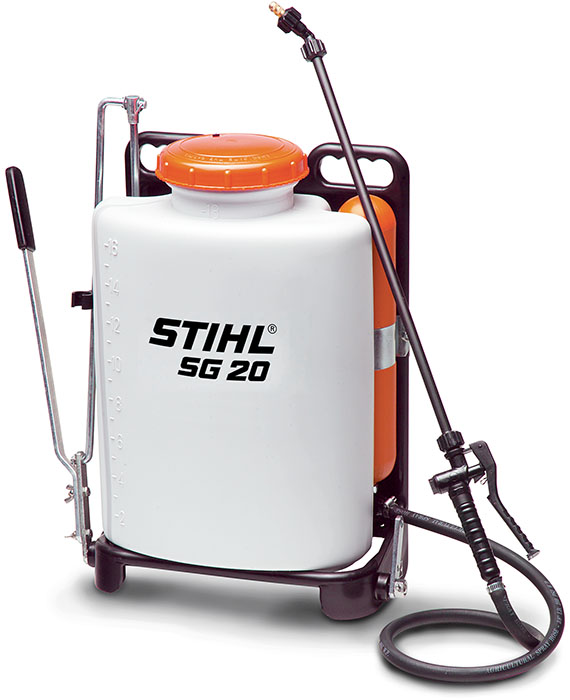So, your trusty Stihl backpack sprayer has decided to take a break. It’s frustrating, especially when you’re in the middle of a crucial spraying job. But don’t panic! This comprehensive guide will walk you through troubleshooting common problems, understanding the importance of torque in your sprayer’s performance, and exploring your options for repair.
Understanding Your Stihl Backpack Sprayer: Engine Options and Torque

Before diving into repairs, let’s quickly understand the mechanics. Stihl backpack sprayers, known for their power and efficiency, come with various engine options, each with specific torque specifications. Torque, simply put, is the twisting force that the engine produces. Higher torque translates to more power to handle thicker fluids and overcome resistance, especially when spraying against wind or over large areas. A lower torque engine might struggle with these tasks and potentially cause premature wear and tear.
Stihl often uses two-stroke engines in their backpack sprayers. These engines are known for their lightweight nature and power-to-weight ratio. However, they require a precise mix of fuel and oil. Incorrect mixing can lead to engine damage, a common reason for needing repairs.
While Stihl doesn’t publicly list specific torque numbers for every model (they focus more on power output in cubic centimeters), understanding the relationship between engine size and torque is crucial. Generally, larger engine displacements (measured in cc) usually correlate with higher torque. This means a 50cc engine will likely deliver more torque than a 30cc engine. Always refer to your owner’s manual for precise specifications on your particular model.
Troubleshooting Common Stihl Backpack Sprayer Issues

Many common problems can be solved without professional repair. Let’s explore some frequent issues and how to address them:
1. Engine Won’t Start:
- Check the fuel mix: Ensure the fuel and oil are mixed correctly according to the manufacturer’s specifications. Incorrect mixing is a leading cause of engine failure.
- Inspect the spark plug: A fouled or damaged spark plug can prevent the engine from starting. Clean or replace it if necessary.
- Fuel line blockage: Examine the fuel line for any blockages or kinks. A clogged fuel line will prevent fuel from reaching the carburetor.
- Air filter: A dirty air filter restricts airflow, hindering the engine’s ability to start. Clean or replace the air filter regularly.
2. Engine Runs Poorly or Stalls:
- Carburetor issues: A dirty or malfunctioning carburetor can cause poor engine performance. Consider cleaning or replacing the carburetor, which may require professional assistance.
- Fuel line problems: Similar to starting issues, a blocked fuel line can lead to inconsistent engine performance.
- Air filter: A clogged air filter affects the air-fuel mixture, leading to stalling or poor performance.
3. Pump Problems:
- Pressure issues: Check for leaks in the pump system. Low pressure might indicate a leak, worn seals, or a malfunctioning pump diaphragm.
- Clogged nozzle: A clogged nozzle is a frequent culprit. Clean the nozzle thoroughly with a wire or appropriate cleaning tool.
- Wand connection: Ensure the wand is properly connected and there are no leaks at the connection point.
When to Call a Professional
While many minor repairs can be handled at home, some issues require professional attention. If you’ve tried basic troubleshooting and the problem persists, don’t hesitate to contact a Stihl authorized service center or a qualified small engine repair shop. Attempting complex repairs without the necessary knowledge and tools can cause further damage and increase repair costs.
Comparing Stihl to Competitors

Stihl holds a strong reputation in the professional-grade market, but several other brands offer backpack sprayers. Comparing Stihl to competitors like Solo, Field King, and Echo requires looking at several factors:
- Engine power and torque: Compare engine size and advertised power output. However, remember that advertised power doesn’t always directly translate to usable torque in real-world spraying scenarios.
- Tank capacity: Consider the size of the tank based on your needs. Larger tanks mean fewer refills but also more weight to carry.
- Pump pressure: Higher pressure can improve spray distance and coverage, but it might also increase fatigue.
- Ergonomics and comfort: Look for features like adjustable straps, padded harnesses, and well-designed handles for comfortable long-term use.
- Warranty and service support: Check the warranty offered by the manufacturer and the availability of service centers in your area.
Practical Advice for Maintaining Your Stihl Backpack Sprayer

Regular maintenance is key to extending the life of your Stihl backpack sprayer. Here are some practical tips:
- Clean the sprayer after each use: Flush the system with clean water to prevent clogging and residue buildup.
- Change the air filter regularly: A clean air filter ensures optimal engine performance.
- Inspect the fuel lines and connections: Look for cracks, leaks, or damage.
- Store the sprayer properly: Keep it in a dry, cool place to prevent corrosion and damage.
- Refer to your owner’s manual: The manual provides detailed instructions on maintenance and troubleshooting.
By following these tips and understanding the nuances of your Stihl backpack sprayer, you can prevent many potential problems and keep your equipment running smoothly for years to come. Remember, proactive maintenance is always cheaper and less frustrating than emergency repairs!




